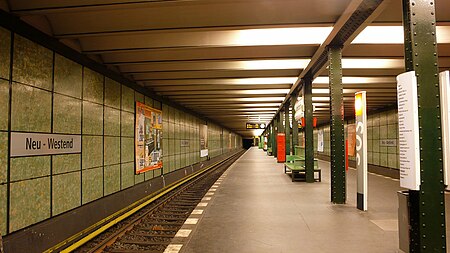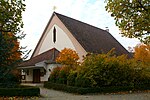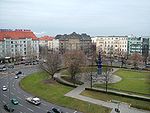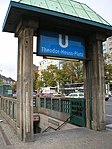Neu-Westend (Berlin U-Bahn)
Berlin U-Bahn stationsBerlin U-Bahn stubsBerlin railway station stubsBuildings and structures in Charlottenburg-WilmersdorfRailway stations in Germany opened in 1922 ... and 1 more
Wikipedia page with obscure subdivision

Neu-Westend is a Berlin U-Bahn station on line U2. It opened in 1922 and was built by A. Grenander. In 1986 the station was renovated, but the original eastern entrance was kept.
Excerpt from the Wikipedia article Neu-Westend (Berlin U-Bahn) (License: CC BY-SA 3.0, Authors, Images).Neu-Westend (Berlin U-Bahn)
Reichsstraße, Berlin Westend
Geographical coordinates (GPS) Address Nearby Places Show on map
Geographical coordinates (GPS)
| Latitude | Longitude |
|---|---|
| N 52.515555555556 ° | E 13.261111111111 ° |
Address
Mister Frank
Reichsstraße
14052 Berlin, Westend
Germany
Open on Google Maps








